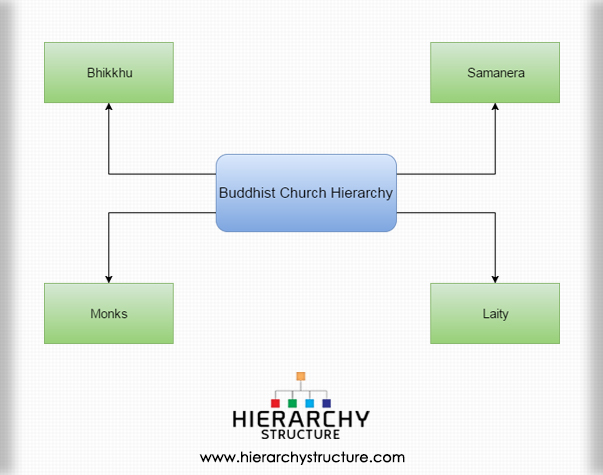Buddhist Churches are very common in America and people who follow the Buddhist Church culture are known as Shin Buddhists. This church preaches Buddhism and its principles and this institution functions according to the hierarchy of Buddhism itself. People who dedicate their entire life to Buddhism are known as Monks, who are further collectively known as the Sangha. They give religious guidance to the followers and as Buddhism is very common all over the world, there are different hierarchal structures followed everywhere, but below given is the most commonly followed hierarchal structure at a Buddhist Church.

- Bhikkhu: A Bhikkhu is a fully ordained Buddhist monk according to the Buddhist tradition. In addition to the ten basic percepts of Buddhism, a Bhikkhu also follows the teachings of the Vinaya. There are a lot of rules which a Bhikkhu has to follow with respect to the conduct of life. This includes not taking anything which is not offered directly; avoid lewd conduct and speech with a women and staying ascetic for life. He has to perform many ceremonies for people and heads all the important work at the church and gives religious guidance to people.
- Samanera: The Samanera is also a monk who has been accepted by the Church but is yet to get higher ordination. He follows the ten percepts, receives a new name and gets his head shaved. They follow the rules just like full-fledged monks but are still ranked junior because they have not received higher ordination. They take care of the church in absence of the main Bhikkhu who is usually taking care of the Church.
- Monks: There are many branches of Buddhism all over the world but Buddhist monks exist in each and every hierarchy of Buddhist religion. They are in charge of running the church, carrying out regular prayers and train the ordinary people who want to join the church by leaving the normal and regular life.
- Laity: The Laity or the lay people are the followers of Buddhism but not ordained. They follow the five percepts of Buddhism which give the people a direction of discipline of body and speech. The Buddhist monks pledge to live in poverty and dedicate their life to religion and hence, they are dependent of the Laity who visits the church for food, clothing and medicine. In return, the Monks provide their services for weddings and other functions which take place at the church.
